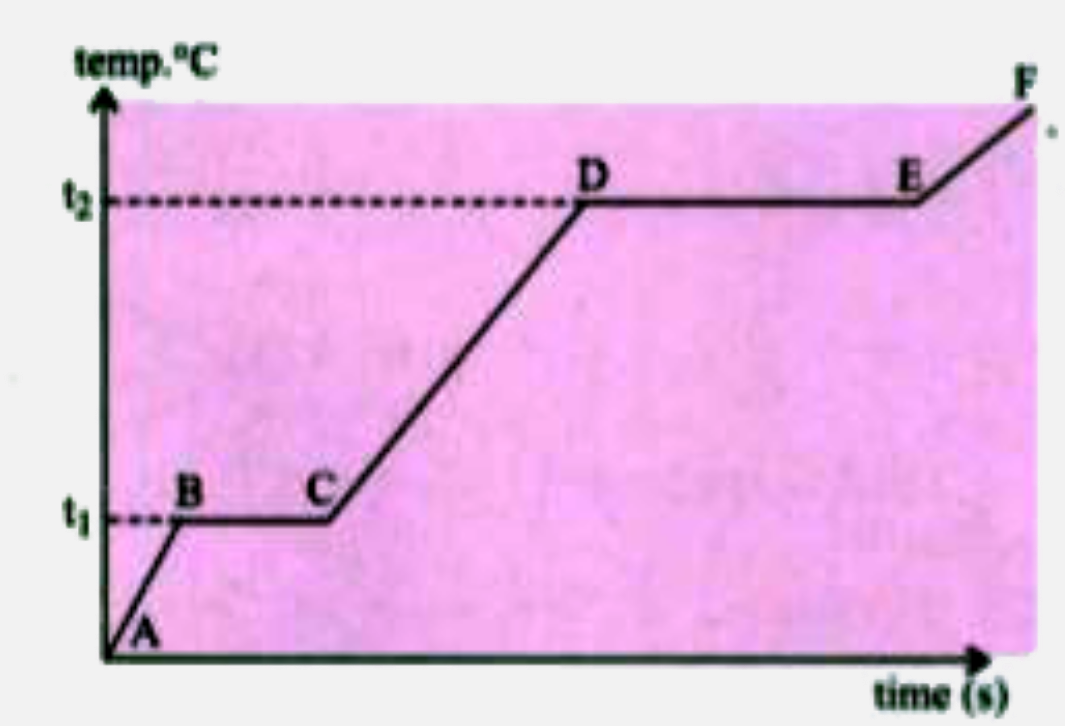Solid ⇔ liquid equilibrium can be achieved only at melting point of the substance.
To determine whether the statement "Solid ↔ Liquid equilibrium can be achieved only at the melting point of the substance" is true or false, we can analyze the concept of equilibrium in the context of phase changes.
1. Understanding Solid-Liquid Equilibrium:
- Solid-liquid equilibrium refers to the state where both solid and liquid phases of a substance coexist at a specific temperature and pressure.
2. Melting Point Definition:
- The melting point (Tm) of a substance is defined as the temperature at which the solid phase turns into the liquid phase. At this temperature, both solid and liquid forms are present.
3. Behavior Below Melting Point:
- When the temperature is below the melting point (T < Tm), the substance exists entirely in the solid state. There is no liquid phase present, and thus, no equilibrium can be established between solid and liquid.
4. Behavior Above Melting Point:
- Conversely, when the temperature is above the melting point (T > Tm), the substance exists entirely in the liquid state. Again, there is no solid phase present, and thus, no equilibrium can be established.
5. Equilibrium at Melting Point:
- At the melting point (T = Tm), both solid and liquid phases are present in equilibrium. This is the only condition under which solid and liquid can coexist.
6. Conclusion:
- Since solid-liquid equilibrium can only be established at the melting point of a substance, the statement is true.
Final Answer:
The statement "Solid ↔ Liquid equilibrium can be achieved only at the melting point of the substance" is True.
---
- Solid-liquid equilibrium refers to the state where both solid and liquid phases of a substance coexist at a specific temperature and pressure.
- The melting point (Tm) of a substance is defined as the temperature at which the solid phase turns into the liquid phase. At this temperature, both solid and liquid forms are present.
- When the temperature is below the melting point (T < Tm), the substance exists entirely in the solid state. There is no liquid phase present, and thus, no equilibrium can be established between solid and liquid.
- Conversely, when the temperature is above the melting point (T > Tm), the substance exists entirely in the liquid state. Again, there is no solid phase present, and thus, no equilibrium can be established.
- At the melting point (T = Tm), both solid and liquid phases are present in equilibrium. This is the only condition under which solid and liquid can coexist.
- Since solid-liquid equilibrium can only be established at the melting point of a substance, the statement is true.
The statement "Solid ↔ Liquid equilibrium can be achieved only at the melting point of the substance" is True.
Topper's Solved these Questions
- CHEMICAL EQUILIBRIUMBOOK - CENGAGE CHEMISTRY ENGLISHCHAPTER - CHEMICAL EQUILIBRIUMEXERCISE - Archives (Multiple Correct)
6 Videos
- CHEMICAL EQUILIBRIUMBOOK - CENGAGE CHEMISTRY ENGLISHCHAPTER - CHEMICAL EQUILIBRIUMEXERCISE - Archives (Single Correct)
9 Videos
- CHEMICAL EQUILIBRIUMBOOK - CENGAGE CHEMISTRY ENGLISHCHAPTER - CHEMICAL EQUILIBRIUMEXERCISE - Exercises (Fill In The Blanks)
35 Videos
- CHEMICAL BONDING AND MOLECULAR STRUCTUREBOOK - CENGAGE CHEMISTRY ENGLISHCHAPTER - CHEMICAL BONDING AND MOLECULAR STRUCTUREEXERCISE - Archives Subjective
15 Videos
- CLASSIFICATION AND NOMENCLATURE OF ORGANIC COMPOUNDSBOOK - CENGAGE CHEMISTRY ENGLISHCHAPTER - CLASSIFICATION AND NOMENCLATURE OF ORGANIC COMPOUNDSEXERCISE - Analytical and Descriptive Type
3 Videos
Similar Questions
Knowledge Check
Assertion : In change of state from solid to liquid the temperature decreases untill the entire amount of the solid subtance melts.
Reason : The phenomenon of refreezing is called meltingAIf both assertion and reason are true and reason is the correct explanation of assertion.BIf both assertion and reason are true and reason is not the correct explanation of assertion.CIf assertion is true and reason is false.DIf both assertion and reason are false.
Can equilibrium be achieved between water and its vapour in an open vassel ? Explain.
View SolutionA liquid can exist only
View SolutionThe diagram below shows the change of phases of a substance on a temperature vs time graph on heating the substance at a constant rate.

What is the boiling and melting point of the substance ?
View SolutionCan liquid ⇔ gas equilibrium be attained in an open vessel ? If not why?
View SolutionIf pressure is applied to the equilibrium ofsolid ⇔ liquid. The melting point of the solid
View SolutionWhich substance has the highest melting point ?
View SolutionIncrease in pressure at one point of the enclosed liquid in equilibrium at rest is transmitted equally to all other points. This is as per
View Solution
